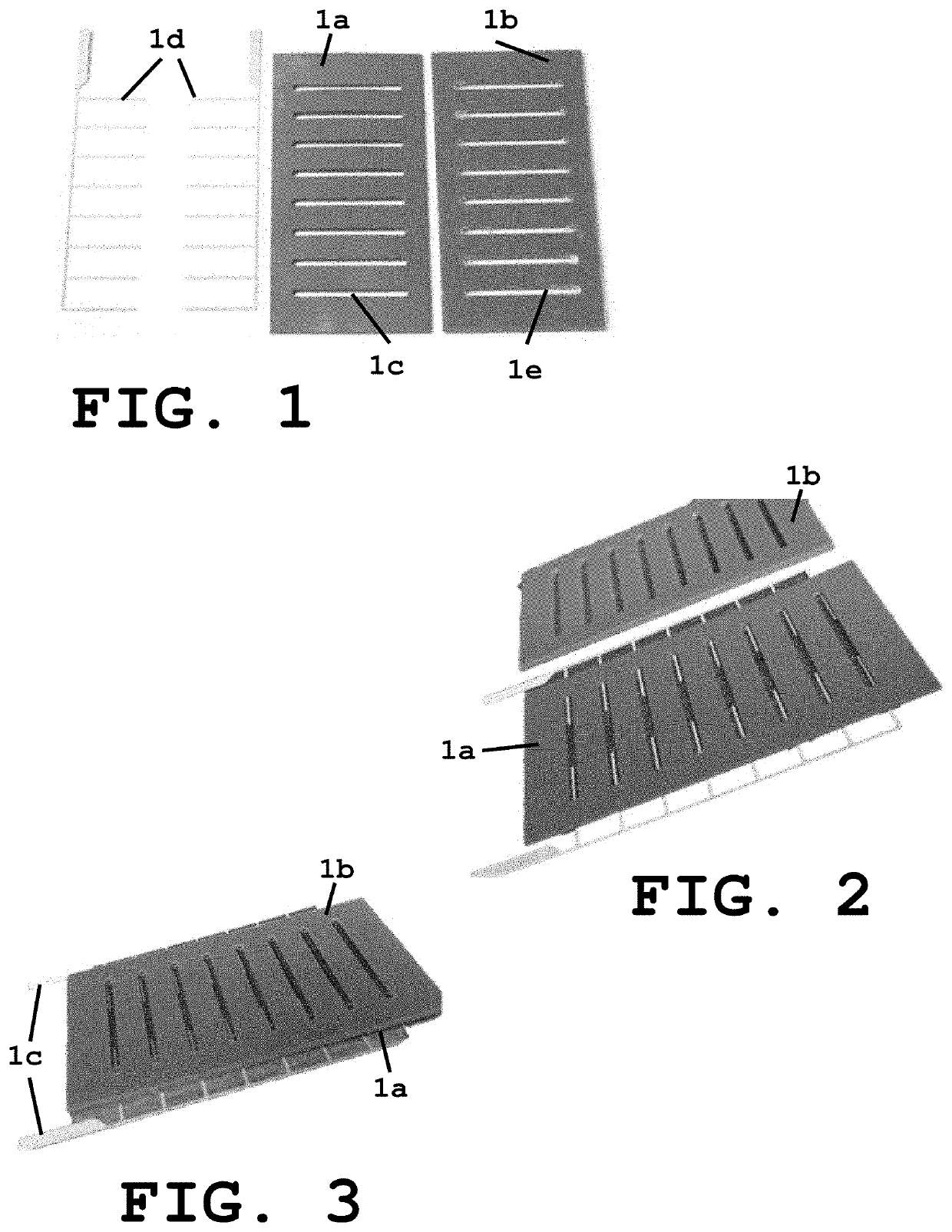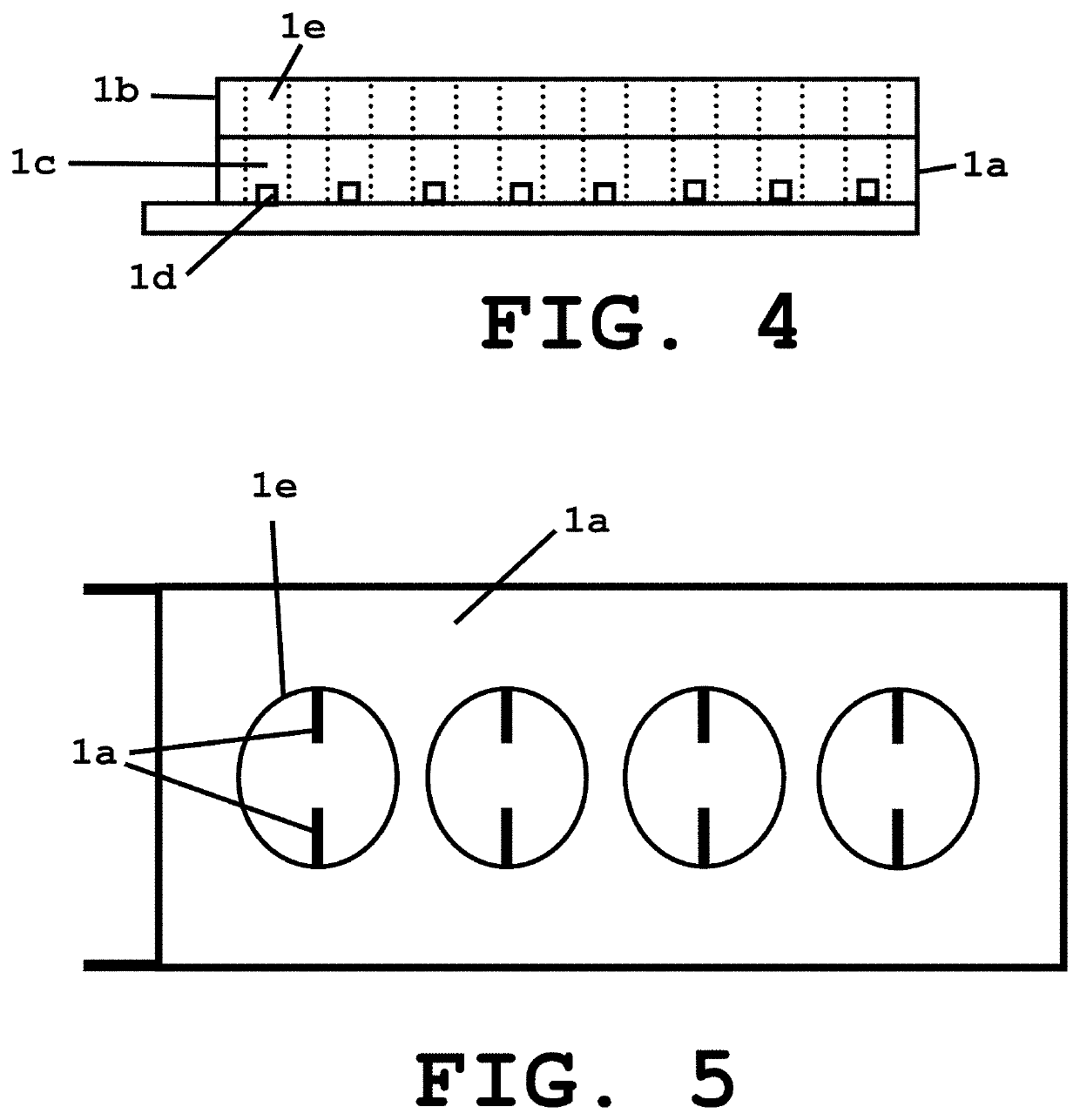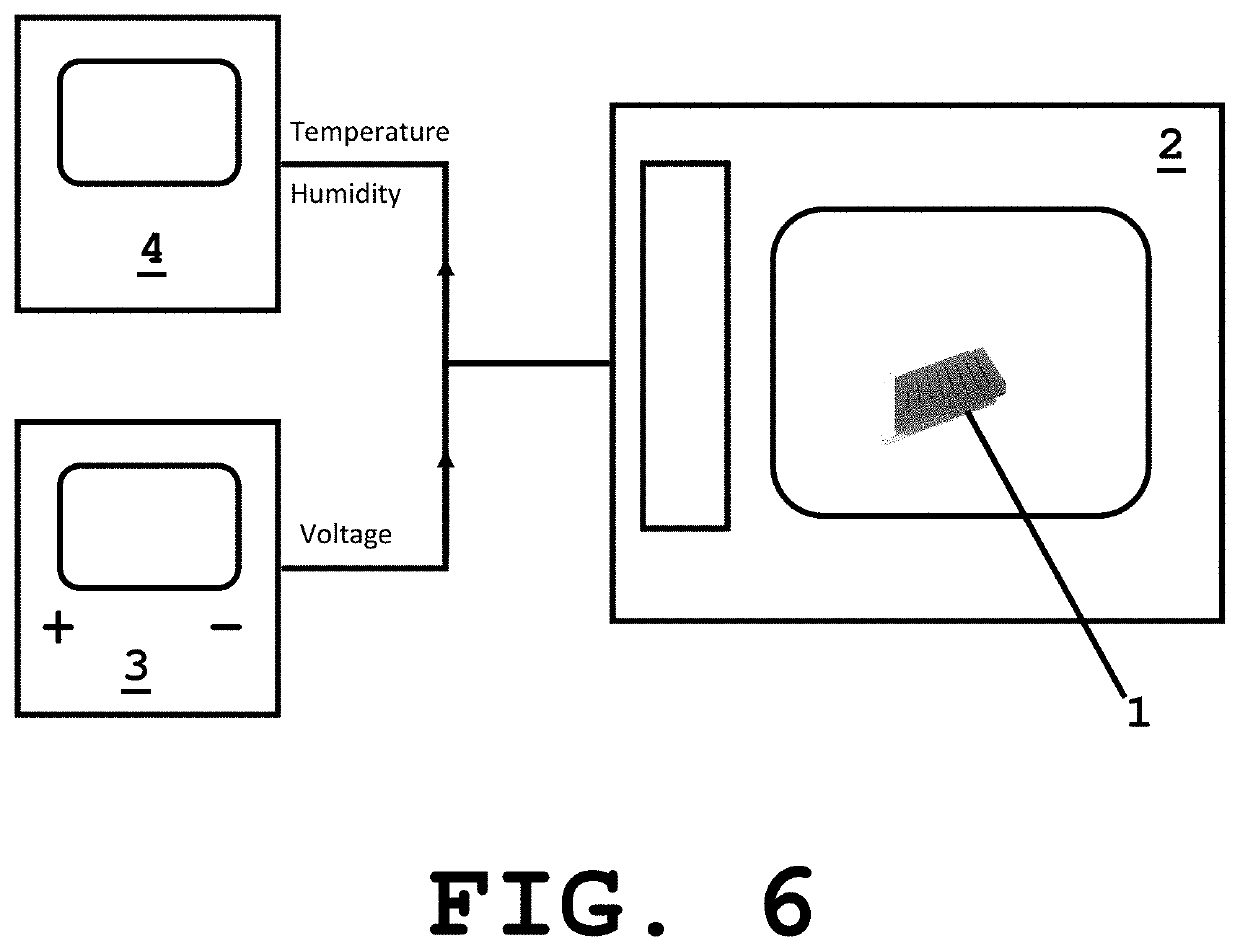High-throughput crystallographic screening device and method for crystalizing membrane proteins using a sub physiological resting membrane potential across a lipid matrix of variable composition
a screening device and crystallographic technology, applied in the field of high-throughput crystallographic screening device and method for crystallizing membrane proteins, can solve the problems of not reflecting, not obtaining enough protein and growing crystals, and determining high-resolution structures for these proteins is far more difficult than globular proteins
- Summary
- Abstract
- Description
- Claims
- Application Information
AI Technical Summary
Benefits of technology
Problems solved by technology
Method used
Image
Examples
Embodiment Construction
[0036]The system of present invention provides a sample unit 1 including a sample holding layer 1a and a lid layer 1b, wherein the sample holding layer 1a includes at least one well 1c with a pair of electrodes 1d and the lid layer 1b also includes at least one well 1e as shown in FIGS. 1-4. Alternatively, depending on the protein loading method the lid layer can be substituted with thin strip of clear adhesive tape. According to a preferred embodiment of the invention, the volume per well in the sample holding layer is 50 μl and 25 μl in the lid layer well. However, other volumes can also be used depending on several factors or parameters such as but no limited to the amount of sample needed. As can be appreciated, the wells have a rectangular shape with the dimensions being selected based on the volume desired to hold the sample for crystallization purposes. In accordance to another embodiment, the wells are provided as round-shaped wells (FIG. 5) with the dimensions also being se...
PUM
| Property | Measurement | Unit |
|---|---|---|
| Time | aaaaa | aaaaa |
| Angle | aaaaa | aaaaa |
| Temperature | aaaaa | aaaaa |
Abstract
Description
Claims
Application Information
 Login to View More
Login to View More - Generate Ideas
- Intellectual Property
- Life Sciences
- Materials
- Tech Scout
- Unparalleled Data Quality
- Higher Quality Content
- 60% Fewer Hallucinations
Browse by: Latest US Patents, China's latest patents, Technical Efficacy Thesaurus, Application Domain, Technology Topic, Popular Technical Reports.
© 2025 PatSnap. All rights reserved.Legal|Privacy policy|Modern Slavery Act Transparency Statement|Sitemap|About US| Contact US: help@patsnap.com



